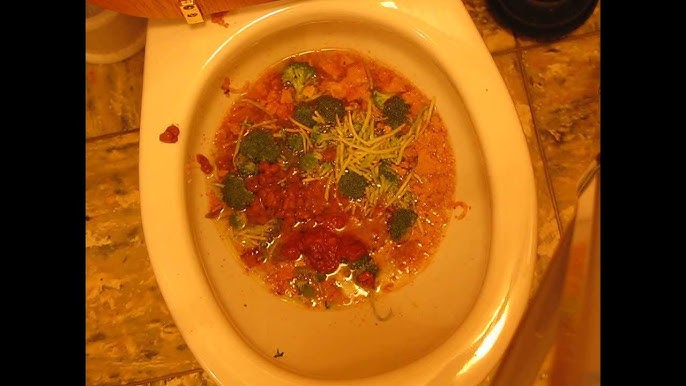Can You to Dispose of Food Down the Toilet?
Can You to Dispose of Food Down the Toilet?
Blog Article
What're your thoughts with regards to Flushing Food Down the Toilet??

Intro
Lots of people are commonly confronted with the dilemma of what to do with food waste, especially when it pertains to leftovers or scraps. One common question that occurs is whether it's fine to purge food down the bathroom. In this write-up, we'll explore the reasons why people could consider purging food, the effects of doing so, and alternative approaches for appropriate disposal.
Reasons individuals might think about purging food
Absence of awareness
Some people may not know the potential injury caused by flushing food down the commode. They might incorrectly believe that it's a harmless practice.
Comfort
Flushing food down the toilet might look like a fast and very easy service to throwing away undesirable scraps, specifically when there's no neighboring trash bin available.
Negligence
In some cases, individuals may simply pick to flush food out of sheer negligence, without thinking about the effects of their activities.
Repercussions of flushing food down the commode
Environmental influence
Food waste that winds up in waterways can contribute to contamination and damage aquatic ecosystems. In addition, the water used to flush food can stress water resources.
Plumbing concerns
Purging food can cause clogged pipelines and drains pipes, triggering expensive pipes repairs and inconveniences.
Kinds of food that should not be purged
Fibrous foods
Foods with coarse structures such as celery or corn husks can obtain entangled in pipelines and trigger blockages.
Starchy foods
Starchy foods like pasta and rice can absorb water and swell, bring about obstructions in pipelines.
Oils and fats
Greasy foods like bacon or food preparation oils need to never be purged down the bathroom as they can strengthen and create blockages.
Proper disposal techniques for food waste
Making use of a garbage disposal
For homes outfitted with waste disposal unit, food scraps can be ground up and purged via the plumbing system. However, not all foods are suitable for disposal in this fashion.
Recycling
Specific food product packaging products can be reused, lowering waste and reducing ecological influence.
Composting
Composting is an environment-friendly means to get rid of food waste. Organic materials can be composted and used to enhance dirt for gardening.
The relevance of proper waste administration
Minimizing environmental damage
Appropriate waste monitoring techniques, such as composting and recycling, help decrease pollution and protect natural resources for future generations.
Securing pipes systems
By staying clear of the method of flushing food down the bathroom, home owners can prevent expensive plumbing fixings and maintain the honesty of their plumbing systems.
Verdict
Finally, while it might be tempting to purge food down the bathroom for convenience, it's important to recognize the prospective effects of this activity. By adopting appropriate waste monitoring techniques and taking care of food waste properly, individuals can add to much healthier pipes systems and a cleaner setting for all.
FLUSH FOOD DOWN THE TOILET?
FLUSHING FOOD CAN CAUSE BLOCKED DRAINS IN YOUR HOME
All of the plumbing fixtures in your home are connected to the same sewer pipe outside of your home. This outdoor sewer pipe is responsible for transporting all the wastewater from your home to the Council sewer mains. Even small pieces of food that go down the kitchen sink can cause problems for your sewer. It should therefore be obvious that flushing larger bits of food, such as meat, risks a clog in either the toilet itself or the sewer pipes. Flushing greasy food is even more problematic because oil coagulates when it cools, coating the interior lining of your pipes.
THE TOILET IS NOT A BIN
Food isn’t the only thing that people shouldn’t be flushing down the toilet. People use the toilet to dispose of all kinds of things such as tampons, makeup wipes, dental floss, kitty litter and even underwear. Water goes to great lengths to educate residents about the high costs and stress placed on wastewater treatment systems simply from people flushing the wrong stuff down the toilet. It costs taxpayers millions of dollars each year, and homeowners thousands in blocked drain repairs.
FLUSHING FOOD IS A WASTE OF WATER
Flushing food is a waste of our most precious resource - water. In June this year Level 1 water restrictions were introduced to protect water supply from drought conditions. Much of New South Wales continues to be affected by prolonged drought with recent figures revealing up to 97 per cent of the state remains in drought. Depending on whether you have a single or dual flush toilet, every single flush uses between five and 11 litres of water. In the current climate this is a huge amount of water to be wasting on flushing food that should be placed in the bin (or better yet, the compost).
https://www.jabplumbingsolutions.com.au/blog/can-you-flush-food-down-the-toilet

I'm just very focused on What Can Happen If You Flush Food Down the Toilet? and I really hope you enjoyed the new page. If you enjoyed reading our article please be sure to share it. Thanks a lot for taking the time to read it.
Request Your Service Report this page